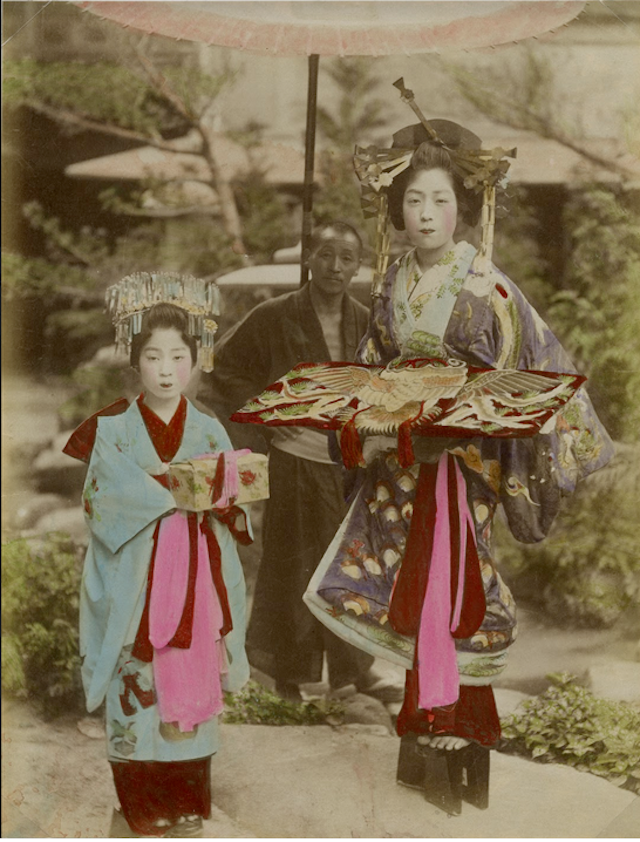
Two Young Women
Two women, or one woman and a child, are in front of the camera dressed in kimono with extravagant hair accessories, each holding objects in their arms. However, their dresses do not not seem to be that of everyday dress, considering the height of their shoes, the amount of hair accessories and how their obi is tied in the front, which reminds one of the dress of a geisha - female entertainers wearing kimono with extravagant hair accessories and makeup - rather than a normal woman. A man also appears in the background, holding the parasol up in the air for the two women. While the colors in the photo itself are not vibrant or strongly pigmented, the women in this photo have clearly been painted over with vibrant colors after it was printed as can be seen from how the paints overlap with some other colors, or do not accurately stay within their areas. Pinks, reds and blues are painted over their kimono to highlight their presence in the picture, and pink is used to create a rather obvious blush on the cheeks.
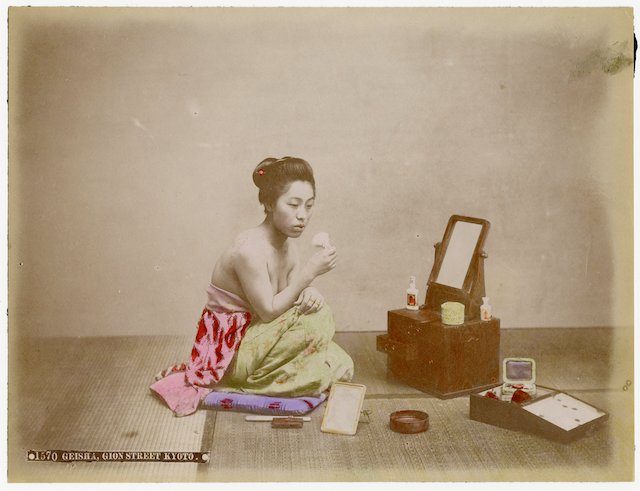
Geisha, Gion Street, Kyoto
The unclothed subject is staged in a Meiji era “tourist photo.” These photos were geared towards foreigners, and as a result were posed in a way that was thought to best represent Japanese culture. This photo of a Geisha in Kyoto is a typical example of such curated ideals. Images of women replaced the need for their physical presence, offering instant enjoyment from any place and time. This speaks to the accessible appeal of tourist photography. While these images functioned as a idealized view of Japan, tourist photography of women cultivated a national identity in the face of increasing Westernization.

Japanese Woman with Scroll
In this photograph, a seated woman writes in a scroll. She is wearing a traditional kimono. The composition mimics ukiyo-e prints, a traditional form of Japanese art that was popular from the 15th to the 17th centuries, with the plain background, beautiful woman subject, and muted colors. Just like the women in a lot of ukiyo-e prints, she is looking away from the viewer- in this case, her eyes do not meet the camera. The artist used color sparingly, only coloring the woman’s lips, her hair pin, her clothing, and the mat she is seated on. This use of color highlights attributes of her femininity and links the photograph to the ukiyo-e tradition.
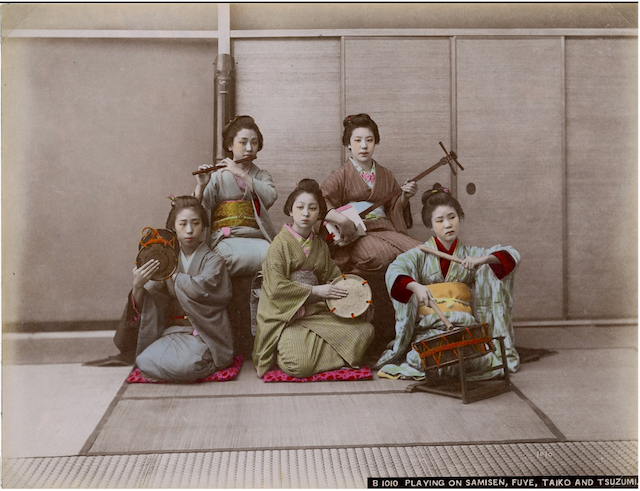
Playing on Samisen, Fuye, Taiko and Tsuzumi
Pictured are five girls playing various instruments, including the samisen, fuye (flute), taiko (drum), and tsuzumi (hand drum). The samisen is a traditional Japanese instrument that has three strings, a long neck, and a small base. The girl in the top right of the photograph holds a samisen while the other girls hold other instruments. Instrument playing started in the late- Edo period of the 19th century. Another popular instrument in Japan was the biwa, which is very similar to a guitar. The girls in this photograph wear traditional Japanese kimotos. In the photograph, the five girls have color while the background is bland. This is a way for the photographer to bring attention to specific parts of the photograph, like the girls and their instruments, and leave other parts out, like the image’s background.
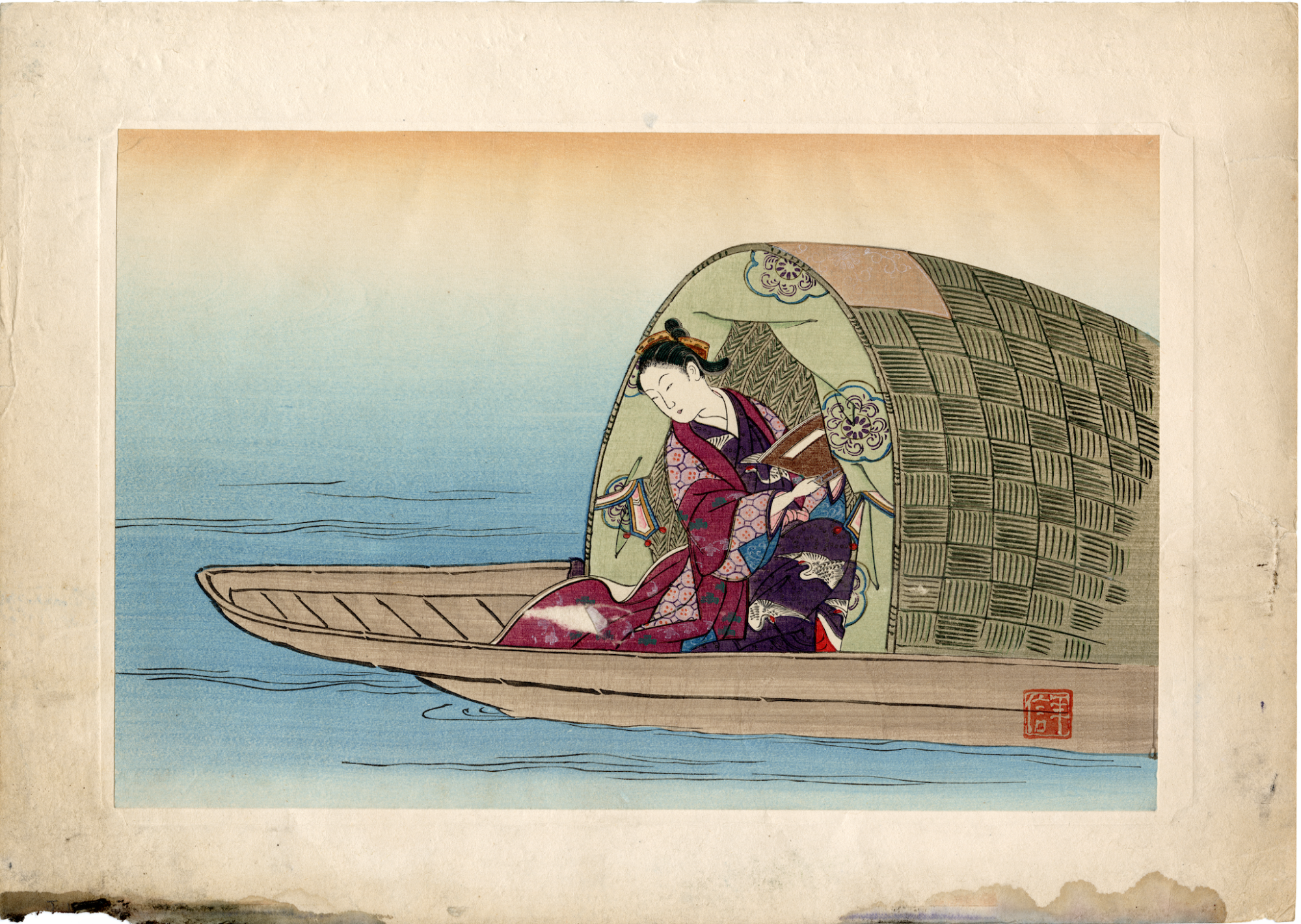
Woodcut of Kimonoed Woman in a Boat
Ukiyo-e or “pictures of the floating world,” captured and heightened the beauty of Japanese scenery, culture and people within its woodblock techniques. This particular print is a bijinga: meaning “beautiful person picture,” the bijinga originated in the Edo period as a way for the average layman to see courtesans for an affordable price. Thus, images of idealized women were commercialized, and were oftentimes advertisements commissioned by brothels, theatres and textile manufacturers. This print speaks to that purpose, as the woman, most likely a geisha, has been posed on a boat staring out enigmatically for an audience that desires an affordable glimpse of beauty. Access to bijinga evaded class status that anyone regardless of their societal position could access. In addition, the images implied proximity of the artists to their subjects. Thus, through this print, viewers could participate from afar in the glamorous ideal of the “floating world.”
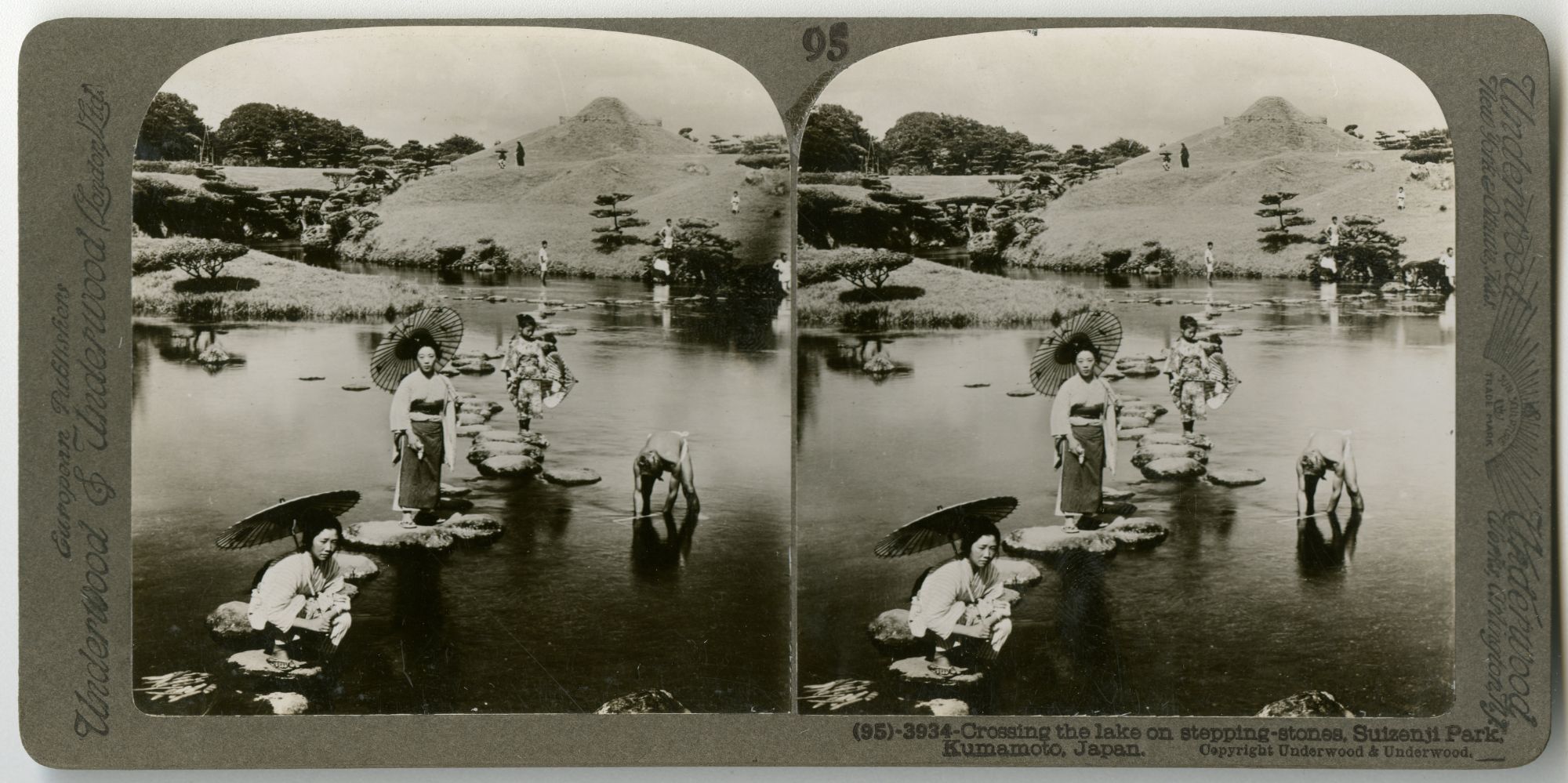
Crossing the Lake on stepping stones, Suizenji Park, Kumamoto, Japan
Taken in the western province of Higo on the Southern Island of Kyushu at Suizenji Park, this stereograph captures a group of women as they walk across stepping stones. Suizenji Park’s history dates back to 1637 when it was chosen by the third Hosokawa Lord as a site for a teahouse and small temple. The female subjects in this photograph are all dressed in cotton kimonos. According to the information in the back of the stereograph, they are maids from the teahouse nearby, called nesans. The stones, which are specifically arranged, are the most important in the photograph. Park visitors come to walk across them, as can be seen in the photograph.